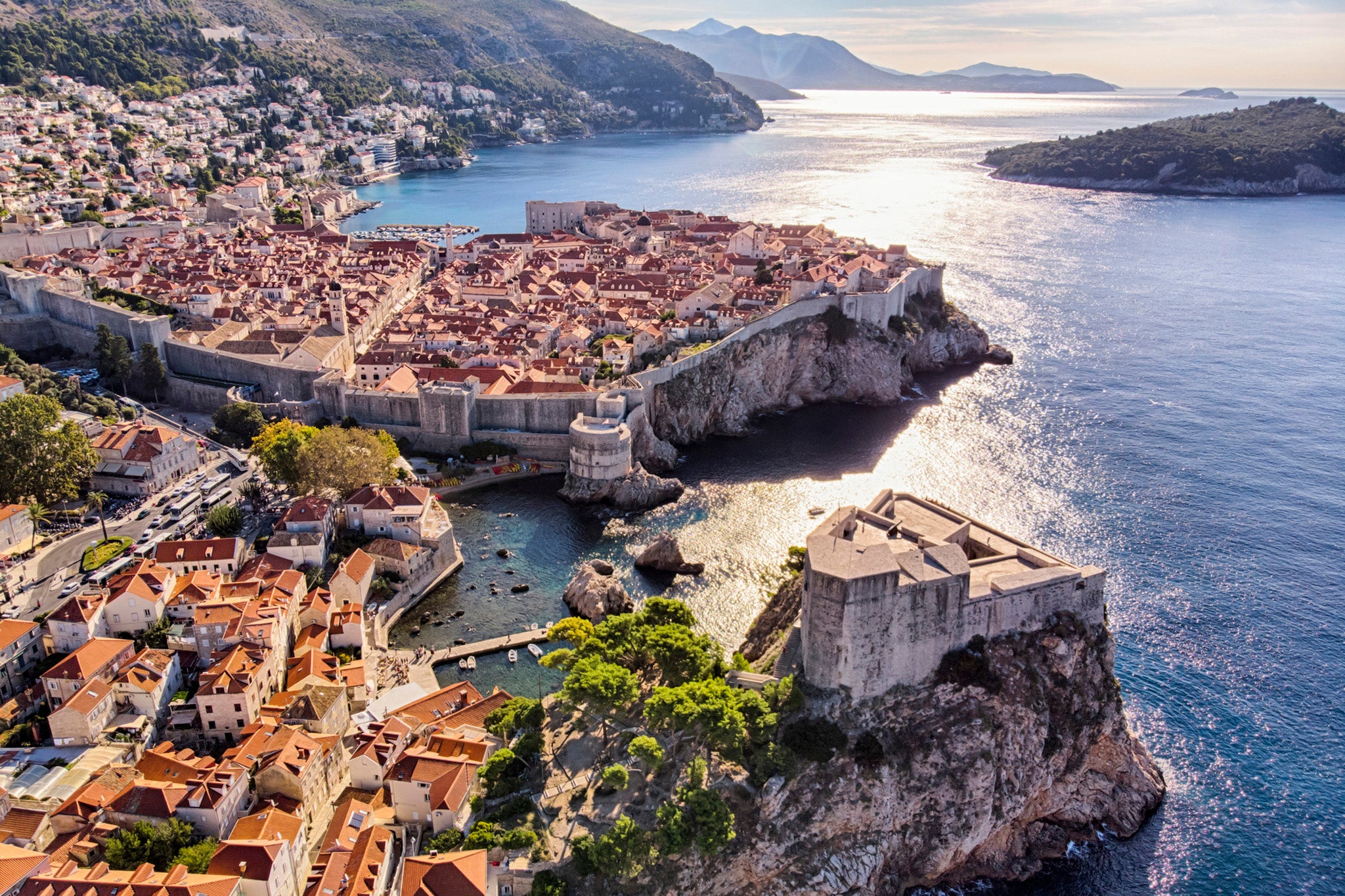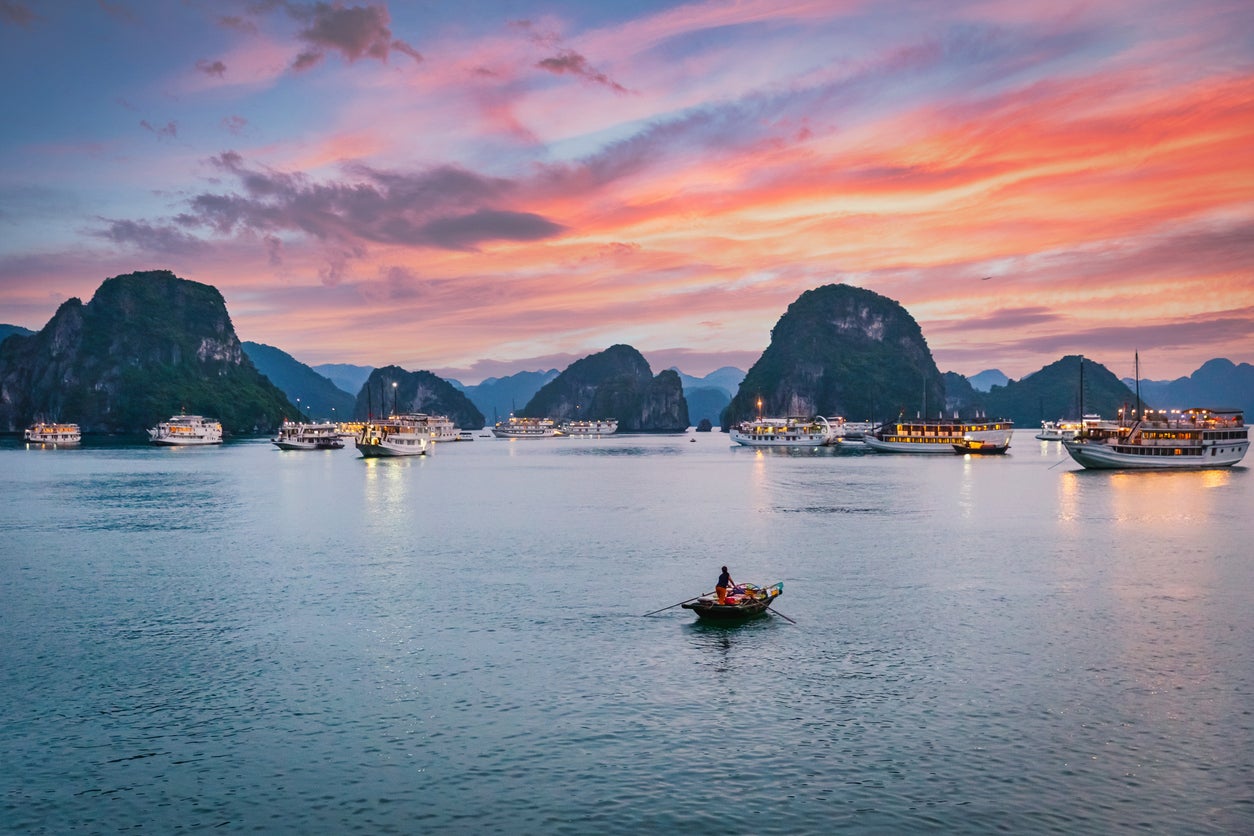What is our best route when Interrailing around Europe?
Simon Calder answers your questions about Interrailing, backpacking in Asia, and whether a visit to Dubrovnik is worth it


Q This summer we plan to Interrail for the first time. The basic plan: take Eurostar to Amsterdam, then cross Germany (visiting Heidelberg), onwards to Salzburg in Austria and across to northern Italy.
Coming back, we thought we would travel from Milan back to Paris and home from there. What do you think?
David M
A To make the most of much of Europe, Interrail is ideal. Much of your plan looks shrewd: Amsterdam is always rewarding, and onward travel to Germany is easy. Pause in Essen to explore the dramatically reinvented industrial site of Zollverein – an unmatched post-apocalyptic theme park. Continue to Wuppertal, home of the marvellous dangling tram. You might also seek out Germany’s football heartland, and museum, in Dortmund.
With an Interrail pass, you can step aboard any intercity express for a faster journey and to avoid the crowds (enticed by the €58/£50 unlimited travel monthly pass on slower trains). Heidelberg is an excellent plan, offering heritage in a superb setting. Speed along to Munich and across the border to Salzburg. After sampling some Sound of Music sights, aim for Innsbruck to begin your trans-Alpine journey to northern Italy.
To avoid surcharges and the need to book, stick to “classic” trains in Italy rather than the high-speed options. You can still cover the ground easily. Meander across to Milan – but from there, I recommend cutting through Switzerland rather than going via France. You can use any Swiss train with an Interrail pass, unlike in France where you need to pay a supplement and book ahead for high-speed trains.
Get at least a glimpse of Como – a fine town at the head of the Italian lake – then ensure you choose one of the trains heading through the mountains rather than through a “base tunnel”. Make Basel your last Swiss stop for abundant culture and cuisine. From here, you could enter France, but I suggest following the German side of the Rhine and exploring some of the Black Forest before crossing to France.
The high-speed line from Strasbourg to Paris is France’s best, and worth the supplement, for a final day or two in the capital before taking Eurostar home.

Q My partner Linda and I are thinking of going to Croatia in September or October by rail. But I am unsure about including Dubrovnik in our itinerary because we are not keen on mass tourism. What is your view?
David F
A Before I tackle Dubrovnik itself, I must raise a concern about your plan to travel to Croatia by rail. There are many excellent places to visit on the Adriatic coast by train, but all of them are in Italy.
I am afraid that the Dalmatian coast of Croatia – as well as neighbouring Slovenia and nearby Albania – does not lend itself to access by rail. Even international rail guru Mark Smith, “The man in Seat 61”, recommends travelling to Split via the Croatian capital, Zagreb (a massive detour) and then continuing to Dubrovnik by bus.
Travelling terrestrially, the way I would approach the Croatian coast is by rail to Trieste, the last station in Italy – then continuing by bus through Slovenia to the Croatian city of Rijeka. From this port, I would take a Jadrolinija ferry south to Split. From this fine city, you can continue onwards by bus or ferry to Dubrovnik.
The question is: should you? I have just returned from my first visit to Dubrovnik in a decade. The difference was shocking: the city appears to have been handed over to tourists, with Game of Thrones fans jostling with cruise passengers. While the setting, monuments and city walls are as impressive as ever, the sheer weight of numbers would, I think, spoil a visit for you.
Were you to delay your visit to the very end of October or into November, the city will feel very different. You will be able to enjoy its echoing lanes and handsome facades in something like splendid isolation, and make excursions – such as across the bay to the fishing port of Cavtat – without the crowds.
If that does not appeal, I suggest you consider an alternative Adriatic destination. The obvious one for me is Durres, Albania’s second city (after the capital, Tirana). You can reach it by ferry overnight from the Italian port of Ancona – or fly there in three hours flat. Direct buses run every hour from Tirana airport to Durres.

Q My 21-year-old son and his girlfriend have booked flights to Asia for a six-week backpacking trip starting in July. They plan to visit Taiwan, Thailand and Vietnam. They have backpacked in Europe before but not in Asia. Is there anything in particular they need to know about staying safe?
Susanna R
A Top of my risk register anywhere on the planet, and particularly in Asia, is road travel. The UK is one of the safest nations in the world for road users. The fatality rate in Taiwan, where roads, vehicles and enforcement are reasonably good, is roughly twice as high. Tragically, in Thailand (with roughly the same population), the death toll is 15 times higher. The figures for Vietnam are similarly awful. Most of the fatalities (about two out of three) involve riders and passengers of motorscooters and three-wheeled tuk-tuks.
As a backpacker, I have taken plenty of rides on these – until I looked at the World Health Organisation figures. So I urge young travellers in cities to stick to the Metro system where available (Bangkok’s is extensive, and in Vietnam, both Hanoi and Ho Chi Minh City have opened lines in the past four years). Elsewhere, aim for proper taxis. And while renting a scooter has lots of appeal, it is a high-risk activity and unlikely to be covered by backpacker insurance. For longer journeys, the risks for professionally driven buses are lower. But I always take trains instead when available, or sometimes fly.
Next in line: accidents in water, particularly when swimming. The Foreign Office warns for Thailand: “People have drowned in strong riptides. Follow all warning signs [at beaches], especially red flags. Take care when swimming, diving, kayaking or whitewater rafting in rivers or close to waterfalls, particularly in the rainy season. Currents can be extremely strong.” Adventure tourism is common across the region, and they should ask other travellers for recommendations of safety-conscious operators.
Protection against tropical diseases is also critical. My go-to source is the Public Health Scotland travel medicine website – fitfortravel.nhs.uk – which provides advice on all the recommended jabs. I do all I can to avoid mosquito bites, mainly by covering up: these unpleasant insects spread malaria and other diseases.
With the dangers of road accidents, drownings and disease minimised, the residual risks are small. I hope they have a great adventure.

Q We are flying to Halifax, Nova Scotia, on 19 May to visit family. Should we use the “ArriveCAN” app to maybe get through border control more quickly? My wife used it three years ago – but that was for Covid reasons.
Robert C
A I read your question with a shudder of recollection. I have a fair few apps on my phone that were mandatory in order to access nations during the Covid pandemic. Typically, you had to upload evidence of vaccinations and/or Covid test results before you were even allowed on a plane to your destination. In the case of Canada, I made numerous border crossings in late 2021 and the summer of 2022 – all of which required the use of ArriveCAN.
What is unusual about this Covid-era invention is that it has mutated into an “Advance Declaration” app. The government in Ottawa says: “You can make your customs and immigration declaration using Advance Declaration in the ArriveCAN app before you fly into one of Canada’s participating airports.” (These are all the obvious gateways, including Halifax and Quebec City as well as Montreal, Toronto, Calgary and Vancouver.)
I am not sure that I agree with the assertion that it is an aesthetic pleasure to “enjoy a more modern travel experience with a digital self-serve tool”. But I do like the idea of whizzing through passport control and customs after a long flight, and not having to fill in tiresome paper forms.
After I received your question, I made a dummy application using my existing ArriveCAN account and a fictional itinerary to Canada. You can apply 72 hours or less before arrival. It took three minutes, and I was emailed confirmation of completing the form instantly. Happily, unlike in 2022, I was not instructed to bring proof of a Covid pre-entry test and vaccinations.
The idea that you pre-register your arrival in return for a smoother frontier experience is spreading: at Singapore, it is virtually mandatory. While not every traveller will be comfortable or able to comply, this is the digital direction of travel for the world. If, like me, you are open to anything that cuts travel hassle, I suggest you sign up.
Email your question to [email protected] or tweet @SimonCalder
Join our commenting forum
Join thought-provoking conversations, follow other Independent readers and see their replies
Comments